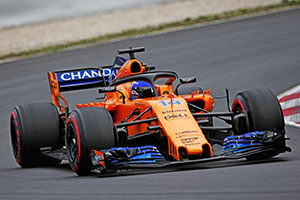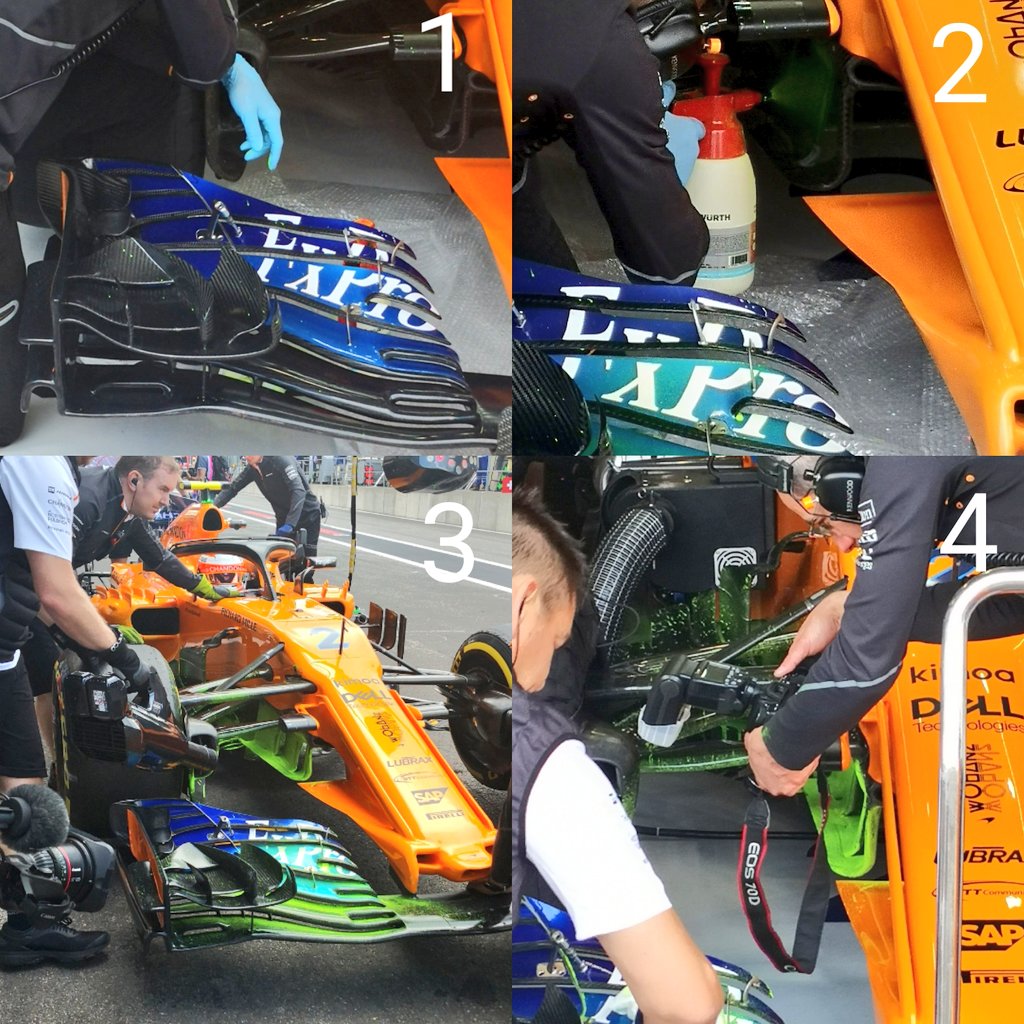M840TR wrote: ↑27 Aug 2018, 22:43
But any air that passes through the mid-wing to go towards the diffuser won't be as strong as the tea-tray extension, which disappeared when the nose cape was introduced. It cannot be a coincidence.
Everything that goes under the nose and between vertical barge boards and chassis ends up under the floor. That's why teams use various scoops and vanes starting from the tip of the nose all the way down to vertical barge boards to guide that air under the nose and towards the splitter. More air means more mass flow, meaning higher velocity, meaning lower pressure, meaning suction and introducing a bit more air to be guided under the floor.
Everything that goes 50+mm outboard from barge boards goes away from the floor, this includes y250 vortex and very likely nose cape vortex as well (if it even survives that long, which doesn't look too convincing). This air is disturbed by front tyre wake and front suspension, has very low energy and so is practically useless.
What you stated is true, tee-tray extensions behind barge boards are important, they are used to make downforce and, again, guide more air under the floor. However, as I said before, vortices are total pressure killers and you don't want to introduce one that was formed more than a meter upstream under the floor, as it would negatively affect diffuser performance.
The vortex formed by lower end of vertical barge boards looks to be extending to the floor edge vortex, enhancing their sealing effect. The vortex formed by upper end of vertical barge boards ends up above the floor, therefore pulling air around it and guiding it above the floor. This later translates to more air in coke bottle zone, improving diffuser performance.
Zynerji wrote: ↑28 Aug 2018, 02:26
Why was vortex stretching under the floor such a thing with the 06-08 cars then? The stair-stepped leading edge of the floor seems counter intuitive to what you are saying...
Rules were different, diffusers were deeper and more aggressive, so they could work the air even if it didn't have as much energy, so teams used long vortices to lower the pressure and didn't concern themselves with energy that much. Other than that, floors were narrower and shorter and overall downforce from the floor and diffuser was less than 50%. Now it's over 60%.







